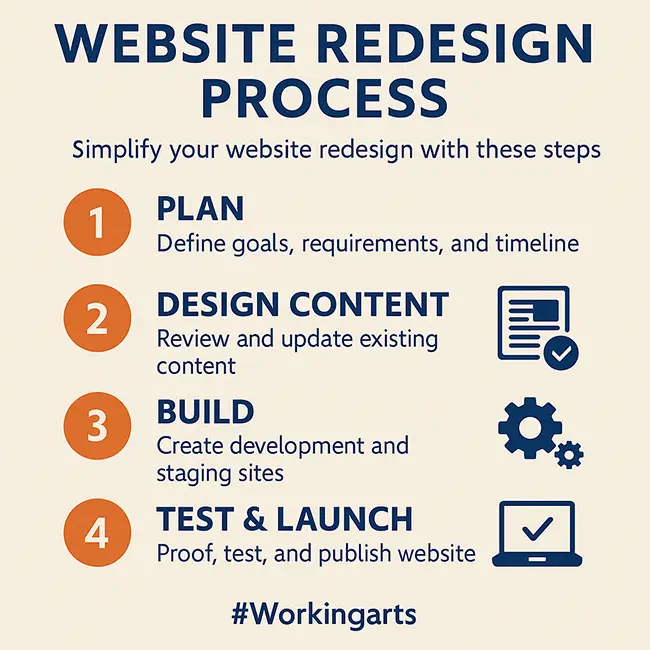In the days of straight html sites, few knew how to even connect to the back end of the site, let alone revise content. With database-driven Content Management Systems, the process seems a bit easier although some hosting services still only feature one instance of the site — the published site — with the potential of a very public website crash when anything goes wrong. Because of the many “moving parts” of a CMS, the process of updating a site can easily crash it, regardless of the skill level of the site manager: a plugin update, a database upgrade, the addition of new functionality, a misplaced script… either of these can temporarily cripple a website. A testing platform is critical.
Best practice demands at least two instances of the site: development and public versions of the website to afford testing on the private site before it goes public. We prefer three instances: development, staging, and production instances of the site, that allow for the development team to do its thing, a staging site for the customer to preview and approve/modify the site, and the public site, for everyone to enjoy.
Redesigning a website should be easier than starting from scratch, because some of the published content can be re-packaged, re-purposed, and re-published, featuring the new look and feel of the upgraded design. However, the process still weighs heavily on the customer, whose site is being upgraded. Content vetting is key to the success of the new publishing process. Unlike templated website designs, in which form dictates content, custom sites take a global and detailed assessment of the content, to publish the most engaging format for its consumers.
Content is also extremely important in the Search Engine Optimization (SEO) aspect of the website design and publishing process because a website is one in a billion (or more) and standing out in the very large crowd only happens to the most deserving.
Moral of the story: good content is king, the best website designs are content driven, not the other way around, because the substance of a website is what matters to its consumers. Thoughtful and engaging content delivers value to the visitors, whose choice to spend their valuable time visiting a site should matter to its publisher, thereby reducing the site’s bounce rate while augmenting the average session duration, which are two essential website metrics Google Analytics uses to rate websites. More on that in a subsequent post.
Happy Surfing! Yes, it’s still a thing…

